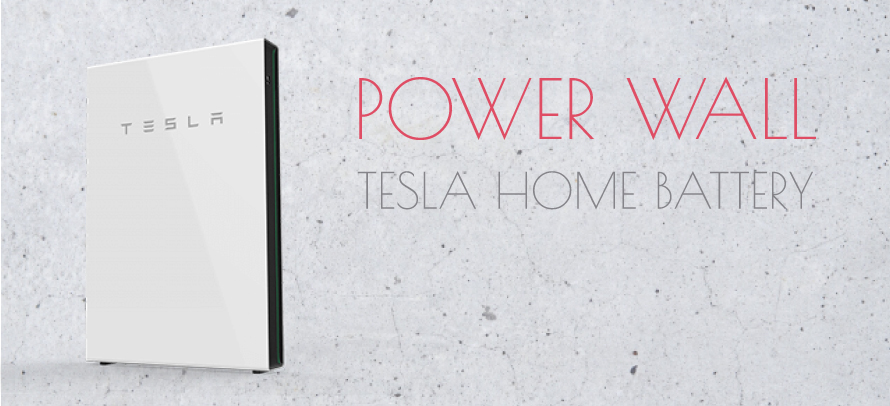翻訳
A portable power supply has become the lifeline
of the modern technological world,
especially the lithium-ion battery.
Imagine a world where all cars are driven
by induction motors and not internal combustion engines.
Induction motors are far superior to IC engines
in almost all engineering aspects,
as well as being more robust and cheaper.
Another huge disadvantage of IC engines
is that they only produce usable torque
in a narrow band of engine RPM.
Considering all of these factors,
induction motors are definitely the perfect choice
for an automobile.
However, the power supply for an induction motor
is the real bottleneck in achieving
a major induction motor revolution
in the automobile industry.
Let's explore how Tesla, with the help of lithium-ion cells,
solved this issue and why lithium-ion cells are going
to become even better in the future.
Let's take a Tesla cell out
from the battery pack and break it down.
You can see different layers
of chemical compounds inside it.
Tesla's lithium-ion battery works on an interesting concept
associated with metals called the electrochemical potential.
Electrochemical potential is the tendency
of a metal to lose electrons.
In fact, the very first cell, developed by Alessandro Volta
more than 200 years ago, was based
on the concept of electrochemical potential.
A general electrochemical series is shown here.
According to these values, lithium has the highest tendency
to lose electrons and fluorine has the least tendency
to lose electrons.
Volta took two metals
with different electrochemical potentials,
in this case, zinc and silver,
and created an external flow of electricity.
Sony made the first commercial model
of a lithium-ion battery in 1991.
It was again based on the same concept
of electrochemical potential.
Lithium, which has the highest tendency to lose electrons,
was used in lithium-ion cells.
Lithium has only one electron in its outer shell
and always wants to lose this electron.
Due to this reason, pure lithium is a highly reactive metal.
It even reacts with water and air.
The trick of a lithium-ion battery operation is the fact
that lithium, in its pure form, is a reactive metal.
But when lithium is part of a metal oxide,
it is quite stable.
Assume that somehow we have separated a lithium atom
from this metal oxide.
This lithium atom is highly unstable
and will instantly form a lithium-ion and an electron.
However, lithium, as a part of metal oxide,
is much more stable than this state.
If you can provide two different paths
for the electron and lithium-ion flow
between the lithium and the metal oxide,
the lithium atom will automatically reach
the metal oxide part.
During this process, we have produced electricity
from the electron flow through the one path.
From these discussions, it is clear
that we can produce electricity
from this lithium metal oxide,
if we firstly separate out lithium atoms
from the lithium metal oxide, and secondly,
guide the electrons lost from such lithium atoms
through an external circuit.
Let's see how lithium-ion cells
achieve these two objectives.
A practical lithium-ion cell
also uses an electrolyte and graphite.
Graphite has a layered structure.
These layers are loosely bonded
so that the separated lithium-ions
can be stored very easily there.
The electrolyte between the graphite and the metal oxide
acts as a guard which allows only lithium-ions through.
Now let's see what happens when you connect a power source
across this arrangement.
The positive side of the power source will obviously attract
and remove electrons from the lithium atoms
of the metal oxide.
These electrons flow through the external circuit
as they cannot flow through the electrolyte
and reach the graphite layer.
In the meantime, the positively charged lithium-ions
will be attracted towards the negative terminal
and will flow through the electrolyte.
lithium-ions also reach the graphite layer space
and get trapped there.
Once all the lithium atoms reach the graphite sheet,
the cell is fully charged.
Thus we have achieved the first objective
which is the lithium-ions and electrons detached
from the metal oxide.
As we discussed, this is an unstable state,
as if being perched on top of a hill.
As soon as the power source is removed,
and a load is connected, the lithium-ions want to go back
to their stable state as a part of the metal oxide.
Due to this tendency, the lithium-ions move
through the electrolyte and electrons via the load,
just like sliding down a hill.
Thus we get an electrical current through the load.
Please note that that graphite does not have a role
in the chemical reaction of the lithium-ion cells.
Graphite is just a storage medium for lithium-ions.
If the internal temperature of the cell rises due
to some abnormal condition,
the liquid electrolyte will dry up
and there will be a short circuit between the anode
and cathode and this can lead to a fire or an explosion.
To avoid such a situation, an insulating layer,
called the separator, is placed between the electrodes.
The separator is permeable for the lithium-ions
because of its micro porosity.
In a practical cell, the graphite and metal oxide are coated
onto copper and aluminum foils.
The foils act as current collectors here
and the positive and negative tabs can be easy taken out
from the current collectors.
An organic salt of lithium acts as the electrolyte
and it is coated on to the separator sheet.
All these three sheets are wound onto the cylinder
around a central steel core,
thus making the cell more compact.
A standard Tesla cell has a voltage
of between three and 4.2 volts.
Many such Tesla cells are connected in series
and in a parallel fashion to form a module.
16 such modules are connected in series
to form a battery pack in the Tesla car.
Lithium-ion cells produce a lot of heat during the operation
and the high temperature will decay the cells' performance.
A battery management system is used
to manage the temperature, state of charge,
voltage protection and cell health monitoring
of such a huge number of cells.
Glycol-based cooling technology is used
in the Tesla battery pack.
The BMS adjusts to the glycol flow rate
to maintain the optimum battery temperature.
Voltage protection is another crucial job of the BMS.
For example, in these three cells, during charging
a higher capacity cell will be charged more than the rest.
To solve this problem,
the BMS uses something called cell balancing.
In cell balancing, all the cells are allowed to charge
and discharge equally, thus protecting them
from over and under voltage.
This is where Tesla scores over Nissan battery technology.
The Nissan Leaf has a huge battery cooling issue due
to the big size of its cells and the absence
of an active cooling method.
The small multiple cell design has one more advantage.
During high power demand situations,
the discharge strain will be divided equally
among each of the cells.
Instead of many small cells
if we had used a single giant cell,
it would have been put under a lot of strain,
and eventually it would suffer premature death.
By using many small cylindrical cells,
the manufacturing technology of which
is already well established,
Tesla clearly made a winning decision.
There is a magical phenomenon which happens
within lithium-ion cells during their very first charge
that saves the lithium-ion cells from sudden death.
Let's see what it is.
The electrons in the graphite layer are a major problem.
The electrolyte will be degraded
if the electrons come into contact with it.
However, the electrons never come into contact
with the electrolyte due to an accidental discovery,
the solid electrolyte interface.
When you charge the cell for the first time,
as explained above, the lithium-ions move
through the electrolyte.
Here, in this journey, solvent molecules
in the electrolyte cover the lithium-ions.
When they reach the graphite, the lithium-ions,
along with the solvent molecules,
react with the graphite and form a layer there
called the SEI layer.
The formation of this SEI layer is a blessing in disguise.
It prevents any direct contact
between the electrons and the electrolyte,
thus saving the electrolyte from degradation.
In this overall process of the formation of the SEI layer,
it will consume 5% of the lithium.
The remaining 95% of the lithium contributes
to the main working of the battery.
Even though the SEI layer was an accidental discovery,
with over two decades of research and development,
scientists have optimized the thickness and chemistry
of the SEI layer for maximum cell performance.
It is amazing to find out that those electronic gadgets
we used around two decades back
did not use lithium-ion batteries.
With its amazing speed of growth,
the lithium-ion battery market is expected
to become a $90 billion annual industry within a few years.
The currently achieved number of charge discharge cycles
of a lithium-ion battery is around 3,000.
Great minds across the globe are putting their best efforts
into increasing this to 10,000 cycles.
That means you would not have to worry
about replacing the battery in your car for 25 years.
Millions of dollars have already been invested in research
into replacing the storage medium graphite with silicon.
If this is successful, the energy density
of the lithium-ion cell will then increase
by more than five times.
We hope this video provided you with
a clear conceptual understanding
about lithium-ion cells and their future.
If you would like to learn more about
the lithium-ion cells used in mobile phones,
please have a look at the video made by Branch Education.
And please, don't forget to support us at patron.com.
Thank you.
ポータブル電源は、現代のテクノロジー界のライフラインとなっている
現代のテクノロジーの世界では、ポータブル電源が生命線となっています。
特にリチウムイオン電池がそうです。
すべての車が内燃機関ではなく、誘導モーターで走る世界を想像してみてください。
すべての車が内燃機関ではなく、誘導モーターで動く世界を想像してみてください。
誘導モーターは、ほとんどすべての工学的側面において、ICエンジンよりもはるかに優れています。
誘導モーターは、ほとんどすべての工学的側面において、ICエンジンよりもはるかに優れています。
誘導モーターは、ほぼすべての工学的側面において、ICエンジンよりもはるかに優れており、さらに頑丈で安価です。
ICエンジンのもう一つの大きな欠点は
ICエンジンのもう一つの大きな欠点は、エンジン回転数の狭い範囲でしか有効なトルクを
ICエンジンのもう一つの大きな欠点は、エンジン回転数の狭い範囲でしか使えないことです。
これらの要素を考慮すると
自動車にはインダクションモーターが最適であることは間違いありません。
自動車には最適です。
しかし、インダクションモーターの電源は
がボトルネックになっています。
誘導モーターの電源がネックとなり
がネックとなっています。
ここでは、テスラがリチウムイオン電池を使ってどのようにこの問題を解決したのか、また、なぜリチウムイオン電池が今後主流になるのかを考えてみましょう。
この問題を解決したテスラと、リチウムイオン電池が
なぜリチウムイオン電池なのか?
テスラのセルを電池パックから取り出して、分解してみましょう。
バッテリーパックから取り出して分解してみましょう。
内部にはさまざまな化合物の層が見えます。
化合物の層が見えますね。
テスラのリチウムイオン電池は、金属に関連する興味深い概念
テスラのリチウムイオン電池は、電気化学ポテンシャルと呼ばれる、金属に関連した興味深い概念を利用しています。
電気化学ポテンシャルとは、金属が電子を失う傾向のことです。
電気化学ポテンシャルとは、金属が電子を失う傾向のことです。
実は、200年以上前にアレッサンドロ・ボルタが開発した世界初の電池は
200年以上前にアレッサンドロ・ボルタが開発した最初の細胞は、電気化学ポテンシャルの概念に基づいています。
電気化学ポテンシャルの概念に基づいています。
一般的な電気化学系列をここに示す。
この値によると、リチウムは電子を失う傾向が最も高く、フッ素は電子を失う傾向が最も高い。
電子を失う傾向が最も高いのはリチウムで、最も低いのはフッ素です。
電子を失いやすい。
ボルタは、電気化学的な電位の異なる2つの金属
ボルタは、電気化学的に異なる電位を持つ2つの金属を用意しました。
この場合、亜鉛と銀である。
ボルタは、電気化学的に電位の異なる2つの金属(亜鉛と銀)を用いて、外部に電気の流れを作った。
ソニーは1991年にリチウムイオン電池を初めて実用化した。
ソニーは1991年にリチウムイオン電池を初めて商品化した。
これも、同じように電位を利用したものである。
電気化学的なポテンシャルを利用したものである。
リチウムイオン電池には、電子を失う傾向が最も強いリチウムが使われた。
リチウムイオン電池には、最も電子を失いやすいリチウムが使われている。
リチウムは外殻に1個しか電子を持っておらず
常に電子を失いたがっているのだ。
そのため、純粋なリチウムは非常に反応性の高い金属である。
水や空気にも反応してしまうのだ。
リチウムイオン電池の動作のコツは
リチウムは純粋な状態では反応性の高い金属である。
しかし、リチウムが金属酸化物の一部になると、非常に安定します。
非常に安定しています。
この金属酸化物から、何らかの方法でリチウム原子を分離したとします。
この金属酸化物からリチウム原子を分離したとします。
このリチウム原子は非常に不安定で
瞬時にリチウムイオンと電子を形成してしまいます。
しかし、金属酸化物の一部であるリチウム。
は、この状態よりもはるかに安定しています。
もし、電子とリチウムイオンの流れに2つの異なる経路を
電子とリチウムイオンの流れを
リチウムと金属酸化物の間に
リチウム原子は自動的に金属酸化物部分に
金属酸化物の部分に到達します。
この過程で、1つの経路を通る電子の流れから電気が発生します。
この過程で、1つの経路を通る電子の流れから電気が発生する。
以上のことから
このリチウム金属酸化物から電気を作ることが
このリチウム金属酸化物から電気を作ることができます。
このリチウム金属酸化物から電気を作るには、まず、リチウム原子を分離して
リチウム金属酸化物からリチウム原子を分離し、次に
そのリチウム原子から失われた電子を外部回路に導き
外部の回路を介して
リチウムイオン電池は
この2つの目的を達成するために
実用的なリチウムイオン電池は
実用的なリチウムイオン電池には、電解質と黒鉛が使われている。
黒鉛は層状の構造をしている。
黒鉛は層状の構造をしており、その層がゆるやかに結合しているため
ゆるやかに結合しているので、分離したリチウムイオンを
簡単に貯めることができる。
黒鉛と金属酸化物の間の電解質は、リチウムイオンだけを通すガードの役割を果たします。
黒鉛と金属酸化物の間にある電解質は、リチウムイオンだけを通すガードの役割を果たしています。
さて、この配列に電源を接続するとどうなるか。
電源を接続するとどうなるか。
電源のプラス側は、当然ながらリチウムイオンを引き寄せて
金属酸化物のリチウム原子から電子を引き出したり、取り除いたりします。
金属酸化物のリチウム原子に電子が引き寄せられ、取り除かれます。
これらの電子は、電解質を流れることができないため、外部回路を流れます。
電解質を流れることができないため
黒鉛層に到達する。
一方、正電荷を帯びたリチウムイオンは
は負端子に引き寄せられ
に引き寄せられ、電解液中を流れていきます。
リチウムイオンはグラファイト層の空間にも到達し
に到達し、そこにトラップされる。
すべてのリチウム原子がグラファイトシートに到達すると。
セルは完全に充電されます。
このようにして、私たちは最初の目的である
リチウムイオンと電子を金属酸化物から切り離すという
金属酸化物から離脱するという最初の目的が達成されました。
しかし、これは不安定な状態です。
丘の上に立っているような不安定な状態です。
電源を切って負荷をかけると、すぐに
電源を切って負荷をかけると、リチウムイオンは元の安定した状態に戻ろうと
金属酸化物の一部としての安定した状態に戻ろうとする。
この傾向により、リチウムイオンは電解質中を移動し
リチウムイオンは電解質を、電子は負荷を介して移動する。
ちょうど坂道を滑り降りるように。
こうして、負荷を介して電流が流れるのである。
なお、黒鉛はリチウムイオンの化学反応には関与しません。
黒鉛は、リチウムイオン電池の化学反応には関与していない。
黒鉛はリチウムイオンの貯蔵媒体に過ぎない。
何らかの異常でセルの内部温度が上昇すると
内部の温度が上昇すると
電解液が乾いてしまい
負極と正極の間でショートしてしまう。
火災や爆発の原因となります。
このような事態を避けるために、電極間にはセパレーターと呼ばれる絶縁層が設けられている。
電極の間にはセパレーターと呼ばれる絶縁層があります。
セパレーターは微細な多孔質であるため、リチウムイオンを透過させることができます。
透過性がある。
実用的なセルでは、銅箔やアルミ箔の上に黒鉛や金属酸化物がコーティングされている。
実用的なセルでは、黒鉛と金属酸化物を銅箔やアルミ箔にコーティングする。
この箔が集電体として機能する。
正負のタブは集電体から簡単に取り出せるようになっている。
集電体から簡単に取り出すことができる。
電解質にはリチウムの有機塩が使われている。
セパレーターシートに塗布されています。
これらの3つのシートは、中心となる鉄芯の周りに円筒状に巻かれている。
これら3つのシートは、中央の鉄芯を中心に円筒状に巻かれています。
このようにして、セルはよりコンパクトになる。
標準的なテスラ電池の電圧は
3〜4.2ボルトである。
このようなテスラセルを多数直列・並列に接続して
並列に接続してモジュールを構成します。
このようなモジュールを16個直列に接続して
テスラ車のバッテリーパックを構成しています。
リチウムイオン電池は発熱量が多い。
温度が高くなると電池の性能が低下する。
バッテリーマネジメントシステムを用いて
温度、充電状態、電圧保護、セルの健康状態を管理する
膨大な数のセルの温度、充電状態、電圧保護、セルの健全性監視を
膨大な数のセルの温度管理、充電状態、電圧保護、セルの状態監視を行うために
テスラのバッテリーパックには、グリコールベースの冷却技術が採用されています。
テスラのバッテリーパックには、グリコールベースの冷却技術が採用されています。
BMSはグリコールの流量を調整して
最適なバッテリー温度を維持します。
電圧保護もBMSの重要な仕事です。
例えば、この3つのセルでは、充電中に
容量の大きいセルが他のセルよりも多く充電されてしまいます。
この問題を解決するために
この問題を解決するために、BMSは「セルバランシング」という手法を用います。
セルバランシングでは、すべてのセルを均等に充電・放電させることで
セルバランシングでは、すべてのセルを均等に充放電させることで
過剰電圧や不足電圧からセルを保護します。
ここがテスラが日産のバッテリー技術に勝っている点です。
日産リーフでは、セルが大きいため、バッテリーの冷却に大きな問題があります。
積極的な冷却方法がないため、バッテリーの冷却に大きな問題があります。
積極的な冷却方法がないためです。
小型のマルチセル設計には、もう一つの利点があります。
電力需要が高いときには
放電負荷を各セルに均等に与えることができます。
それぞれのセルに均等に分配されます。
たくさんの小さなセルではなく
もし、巨大なセルを1個使っていたら
たくさんの小さなセルではなく、1つの巨大なセルを使っていたら、大きな負担がかかってしまい
1つの巨大な細胞を使っていたら、たくさんの小さな細胞に負担がかかり、やがて早死にしてしまうでしょう。
小さな円柱状のセルをたくさん使うことで
製造技術が確立されている
その製造技術はすでに確立されている。
テスラは明らかに勝利の判断をしたのです。
リチウムイオン電池には、最初の充電時に、不思議な現象が起こる。
リチウムイオン電池には、最初の充電時に
それは、リチウムイオン電池を突然の死から救うものだ。
それが何かを見てみよう。
黒鉛層の電子が大問題になる。
電子が黒鉛層に触れると、電解液が劣化してしまう。
電子が接触すると電解液が劣化する。
しかし、事故のために電子が電解質に接触することはない。
偶然の発見により、電子が電解質に接触することはない。
それが「固体電解質界面」です。
初めて電池を充電するとき。
最初に充電するときには、先ほど説明したように、リチウムイオンが
電解質の中を移動する。
ここで、この移動の際に、電解液中の溶媒分子
電解液中の溶媒分子がリチウムイオンを覆います。
黒鉛に到達すると、リチウムイオンは溶媒分子とともに
溶媒分子と一緒に
黒鉛と反応して、SEI層と呼ばれる層を形成する。
SEI層と呼ばれています。
このSEI層の形成は、不幸中の幸いと言えるだろう。
電子と電解質の直接接触を防ぐことができる
電子と電解質の直接的な接触を防ぎ
電解質の劣化を防ぐことができる。
このSEI層の形成プロセス全体では
5%のリチウムを消費します。
残りの95%のリチウムは
電池の働きに貢献する。
SEI層は偶然の発見でした。
20年以上にわたる研究開発の結果
SEI層は偶然の発見でしたが、20年以上にわたる研究開発により
SEI層の厚さと化学的性質を最適化し、電池の性能を最大限に引き出しています。
20年前に私たちが使っていた電子機器が、今ではこんなにも進化しているとは驚きです。
私たちが20年ほど前に使っていた電子機器には
驚くべきことに、私たちが20年ほど前に使っていた電子機器には、リチウムイオン電池が使われていませんでした。
その驚異的な成長スピードにより
リチウムイオン電池市場は
数年後には年間900億ドル規模の産業になると予想されている。
現在達成されているリチウムイオン電池の充放電サイクル数は
現在達成されているリチウムイオン電池の充放電回数は約3,000回。
これを10,000回にしようと、世界中の偉い人たちが知恵を絞っています。
これを1万回にしようと、世界中の偉い人たちが頑張っています。
そうすれば、車のバッテリー交換の心配をしなくて済む。
つまり、25年間、車のバッテリーを交換する必要がないということです。
記憶媒体である黒鉛を黒鉛に置き換える研究には、すでに数百万ドルが投資されています。
媒体であるグラファイトをシリコンに置き換える研究には、すでに数百万ドルが投じられています。
これが成功すれば、リチウムイオン電池のエネルギー密度は
リチウムイオン電池のエネルギー密度は5倍以上になります。
5倍以上になります。
このビデオをご覧になって
リチウムイオン電池とその未来について
今回のビデオでは、リチウムイオン電池とその将来性について、概念的に理解していただけたと思います。
もっと詳しく知りたい方は
携帯電話に使われているリチウムイオン電池について
ブランチエデュケーション社のビデオをご覧ください。
また、パトロン・ドット・コムへのご支援もお忘れなく。
ありがとうございました。



